With a book and a special issue beer, the Brussels-based Irishman and beer blogger Eoghan Walsh is paying tribute to Brussels' rich but oft-forgotten history of brewing. The book tells the stories of the rise and fall of illustrious companies, and also takes readers to the European Parliament, Anderlecht football club, Expo 58, and Patrice Lumumba's Congo.
© Brussels Beer City
| Brewing history: Wiels

© Brussels Beer City
| Eoghan Walsh.
Belgian Beer thrives on made-up stories and spooky folklore,” the American beer author Joe Stange writes in his foreword to Brussels Beer City by Eoghan Walsh. Stange refers, among other things, to the far-fetched foundation year 1366 on Stella bottles, and to the tall tales about spontaneous fermentation in the Zenne Valley. Belgium's beer heritage could certainly use some historical background.
And that is precisely what Walsh is providing. After graduating in European Studies in Maastricht, Walsh moved to Brussels in 2009, and he still lives here with his wife from Leuven. Walsh's blog about Brussels became the beer blog Beercity.brussels, and after his piece about a visit to the abandoned Atlas Brewery in Anderlecht was picked up in the now defunct magazine Belgian Beer and Food by his namesake Paul Walsh, he wrote a whole series of stories about the history of Brussels' breweries, which have now been collected in this book. It is perfect for (international) Brussels beer lovers because Walsh does not write the umpteenth story about geuze or about the current heyday of craft beer in Brussels. He tells the stories of the breweries that made the transition from spontaneous to low fermentation between 1880 and 1980, often with great success, and which left well-known visual traces in the cityscape. For example, he writes about Belle-Vue and Anderlecht football club, Vandenheuvel and Expo 58, Brasserie Leopold and the European Parliament, or Wielemans-Ceuppens and the first Congolese prime minister Patrice Lumumba, who was recruited by Wielemans to distribute Coca-Cola in Congo before independence.
“Living in Belgium as a foreigner, you can’t really avoid beer, can you?”

Puzzling pyramids
After Michael Jackson, Joe Stange, Tim Webb, Breandán Kearney, and Paul Walsh, Eoghan Walsh is thus another English-speaking author to write with knowledge and passion about Belgian and Brussels beer. “Well, living in Belgium as a foreigner, you can't really avoid beer, can you? If you want to get in with your in-laws and your Belgian relatives, there are a couple of touchstones. One of them is cycling and another one is certainly beer. Fifteen years ago, in Ireland you had the choice between the likes of Budweiser, Heineken, Miller, Coors, and Carlsberg, with Guinness as a separate category. There was no variety and nothing much to get excited about. In Brussels, I became obsessed with Cantillon's lambic beers, and when the craft beer shop Malt Attacks opened down by the Sint-Gillisvoorplein/parvis de Sint-Gilles, I started picking up the new local beers from Brasserie de la Senne. But since I studied history, I also wanted to learn about the past. And as I needed a focus for my blog about Brussels, beer became the lens through which to view the city, its history, its culture, its architecture… Buildings and names of breweries like Belle-Vue, Wielemans, or Caulier are a bit like the pyramids in Egypt. They have been there for as long as folk memory can remember, but not everybody really knows how they got there. If you read the book you should be able to piece the puzzle together.”
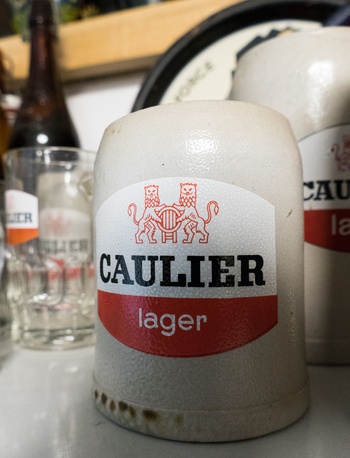
© Brussels Beer City
| Caulier Lager.
It is a funny coincidence that Eoghan's wife is from Leuven. That city is home to the Artois brewery (now Anheuser-Busch InBev), which appears in the book numerous times as the last buyer of the ever-larger Brussels brewing conglomerates, which were nevertheless closed after these mergers. “It's interesting to see that big shadow of Artois looming larger and larger over the city's breweries as time goes on. But you saw that in the UK as well. The breweries that were smarter or able to move more quickly, bought up everybody else before they were themselves bought out. Not so much out of interest in keeping those bought breweries going, but for their networks of bars and cafés through which they could now sell their own beers. Wielemans, for example, had a huge network of cafés in Brussels and elsewhere.”
In addition to the closure of many breweries in Brussels, starting in the 1950s we also see the notorious Brussels demolition and building craze, which destroyed a lot of that old industrial heritage. “We were unlucky that the trends towards consolidation of the breweries and the crazy city development from the fifties onwards came at the same time. Had these businesses survived a bit longer, probably more of that heritage would now still be there.”
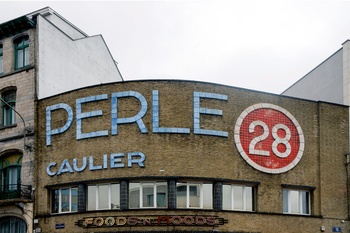
© Brussels Beer City
| The book ends with a chapter on the soon to be resurrected Caulier brewery.
The godfather
To write his stories, Walsh walked around the city, consulted archives and books, and spoke to a range of people. Like Yvan De Baets at Brasserie de la Senne, who knows what Wiel's pils would have tasted like. But also to people who are no longer with us, like Guy Moerenhout, who wrote the blog “Brasseries et bières de Bruxelles” and Guido Vanderhulst, an expert in Brussels' industrial past from the Museum La Fonderie. Walsh: “A recurring theme in the book is the attempts of people who fought to maintain the industrial heritage of the city against the people who often successfully tried to destroy it. In his fight against the commune and Artois, Guido more or less singlehandedly rescued much of the Wielemans-Ceuppens brewery from the demolition crews. He was part of a generation of people that had deep knowledge of the city and it's brewing past, and that knowledge is at risk of disappearing with them.”
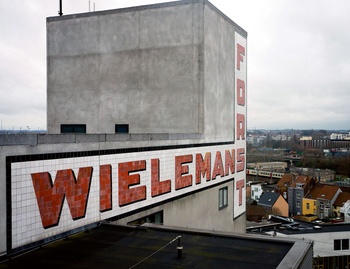
© Brussels Beer City
Fortunately, there is still the irony of history because many small and large breweries are being currently being built in Brussels. “That is why I ended the book with the chapter on the former, but also soon to be resurrected Caulier brewery. We've come from a situation in which Cantillon was the only brewery, until Brasserie de la Senne showed that brewing beer in Brussels was still possible. And Yvan De Baets is now the godfather of a new generation of brewers who have all found their niche and who see Brussels explicitly as part of their identity. Beer is cool again, to the extent that it has become a productive part of Brussels' industry, with still more applications for brewing licenses again this year. We have entered a new golden age.”
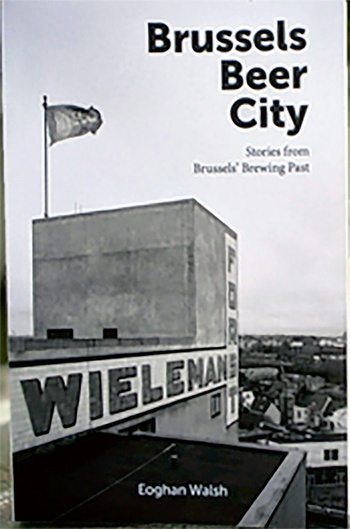
© Brussels Beer City
New old beer
To celebrate the book's launch, Walsh joined forces with Sam Fleet from the Brussels Beer Project (BBP) brewery and beer historian Ron Patterson to brew a special beer. SCTCH 1920 is a Scotch Ale based on a 1928 recipe from a brewery in Edinburgh. Scotch ale is a style of beer that reached Brussels one hundred years ago. It is the only beer from the golden years that Walsh describes that is still in production. The current Scotch C.T.S. by Anheuser-Busch InBev is a descendent of the CTS Scotch by Wielemans-Ceuppens. 'CTS' stands for Crown Tree Stout – a reference to the trees on the brewery's street. Walsh: “You can write about vanished and abandoned breweries, but it is of course very difficult to get a visceral sense of what their beers tasted like. That's why we thought of brewing a beer from the golden age between 1880 and the Second World War. At that time, English beers were all the rage. Belgians couldn't get enough of pale ales and stouts and scotch ales. And the SCTCH 1920 is not a dark and sweet Scotch like we would expect today, but one that would have been sold at the time.” The surprisingly blonde beer was brewed with Belgian hop at a volume of 800 litres and is available from the (BBP) brewery.
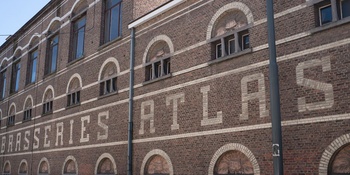
© Brussels Beer City
| Brasserie Atlas.
BRUSSELS BEER CITY, Eoghan Walsh, Brussels Beer City. Stories from Brussels' brewingpast (86 p.) is available from Amazon, Malt Attacks, Dekkera – la bièrerie du quartier Wiels, Waterstones, and Fermenthings. www.beercity.brussels
Read more about: Brussel , Expo , Resto & Bar , eoghan walsh , bierkenner , brussels bier
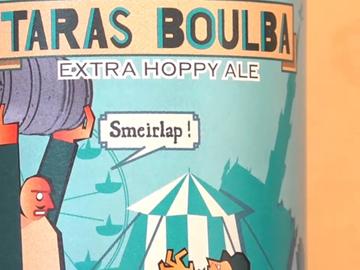
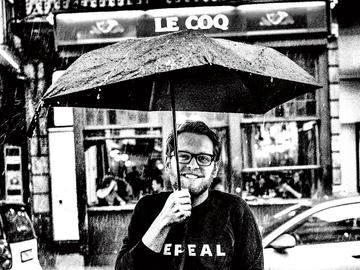
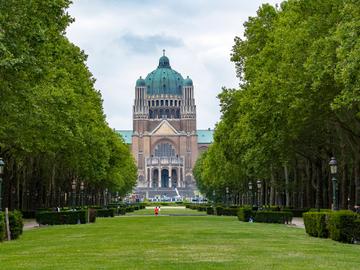
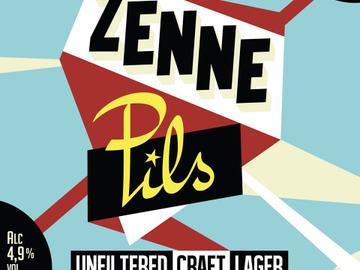
Fijn dat je wil reageren. Wie reageert, gaat akkoord met onze huisregels. Hoe reageren via Disqus? Een woordje uitleg.